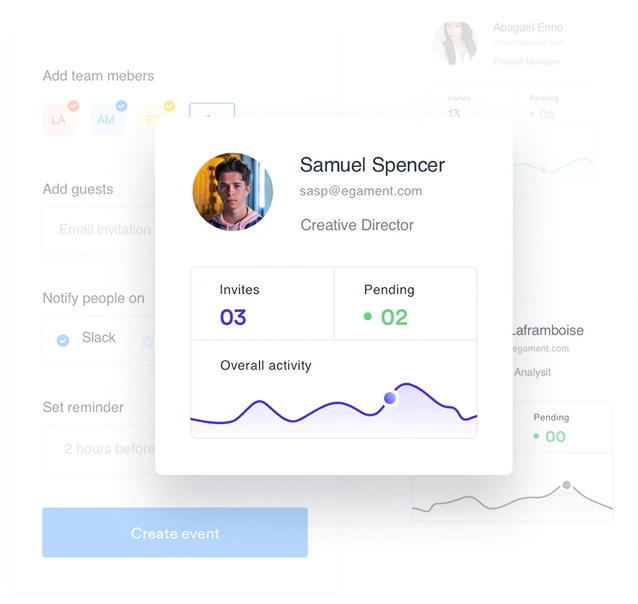Here’s a statistic that might surprise you: 78% of educational institutions still rely on fragmented, legacy systems that require manual data entry across multiple platforms. This means that while students expect Netflix-level user experiences, most colleges and universities are operating with technology that feels more like dial-up internet.
When any institution runs on fragmented systems, the admin staff keeps juggling different browser tabs. For instance, copying student information from the admissions system, pasting it into the academic records database, and then manually updating the financial aid portal.
Meanwhile, the finance department is doing the same dance with billing information. By the end of the week, they will realize that they spent 40 hours on tasks that an integrated system could handle in minutes.
This disconnect isn’t just inefficient—it’s costly.
Research shows that institutions using fragmented systems spend 35% more on administrative overhead and experience 40% more data errors than those with integrated solutions. More importantly, these inefficiencies directly impact student satisfaction and institutional competitiveness.
When your student information system doesn’t communicate with your learning management system, and neither talks to your financial aid platform, you’re essentially running three separate institutions under one roof. Staff members become human bridges, manually transferring information between systems that should be seamlessly connected.
This fragmentation creates a ripple effect throughout the institution. Academic advisors can’t access real-time enrollment data when counseling students. Financial aid officers work with outdated information that may have changed in the registrar’s system hours ago. Meanwhile, IT departments are stretched thin, maintaining multiple vendor relationships and troubleshooting integration issues that seem to multiply daily.
Today’s students grew up with smartphones and one-click purchasing. They expect the same level of seamless interaction from their educational institutions. However, fragmented systems force students to navigate multiple portals, remember different login credentials, and often submit the same information repeatedly across different platforms.
Consider the typical student journey: applying through one system, registering for classes in another, accessing grades through a third platform, and managing financial aid via a fourth portal. Each transition point becomes a potential frustration that can impact student satisfaction and, ultimately, retention rates.
An integrated Student Information System creates a single source of truth for all student-related data. When a student updates their contact information, that change instantly reflects across admissions, academic records, financial aid, and billing systems. This isn’t just convenient—it’s transformational for institutional efficiency.
Moreover, integrated systems eliminate the need for manual data reconciliation. Staff no longer spend hours verifying that information matches across platforms because there’s only one platform to manage. This unified approach reduces errors by up to 60% while freeing up valuable human resources for more strategic initiatives.
Integration enables real-time reporting and analytics that simply aren’t possible with fragmented systems. Academic leaders can instantly access enrollment trends, financial officers can monitor revenue streams in real-time, and student success teams can identify at-risk students before problems escalate.
For instance, an integrated system can automatically flag when a student’s academic performance drops while their financial aid status changes, triggering proactive interventions that improve retention rates. These insights become the foundation for data-driven decision-making at every level of the institution.
The ultimate measure of any educational technology investment is its impact on student success. Integrated SIS solutions contribute to improved outcomes through several mechanisms:
Smart institutions look beyond initial licensing fees to evaluate the total cost of ownership over a five-year period. This includes implementation costs, training expenses, ongoing maintenance, and the hidden costs of system fragmentation. In most cases, integrated solutions deliver positive ROI within 18-24 months despite higher upfront investments.
The educational technology landscape is constantly evolving, making vendor stability a crucial consideration. Leading institutions prioritize partners with proven track records in higher education, robust support systems, and clear roadmaps for future development. They also evaluate the vendor’s ability to adapt to changing regulatory requirements and emerging technologies.
Successful SIS implementations require more than just technical expertise—they demand comprehensive change management strategies. Forward-thinking institutions select vendors who provide dedicated implementation teams, extensive training programs, and ongoing support to ensure smooth transitions.
The choice between fragmented legacy systems and integrated SIS solutions isn’t really a choice at all—it’s a strategic imperative. As competition for students intensifies and operational efficiency becomes increasingly critical, institutions that continue relying on disconnected systems will find themselves at a significant disadvantage.
Integrated SIS solutions offer more than just operational efficiency; they provide the foundation for data-driven decision making, improved student experiences, and sustainable institutional growth. The question isn’t whether your institution needs an integrated system, but rather how quickly you can implement one to stay competitive in today’s educational landscape.
The time for incremental improvements has passed. Leading institutions are making bold moves toward integration because they understand that fragmented systems are incompatible with modern educational excellence.
Ready to transform your institution’s operational efficiency and student experience? Book your demo with our experts to discover how an integrated SIS solution can drive measurable improvements across your campus. Don’t let outdated systems hold your institution back—take the first step toward seamless integration today.

Experience Academia – Your partner in transforming campus operations, a trusted all-in-one ERP/SIS solution.
Get the latest insights, trends, and updates delivered straight to your inbox!
